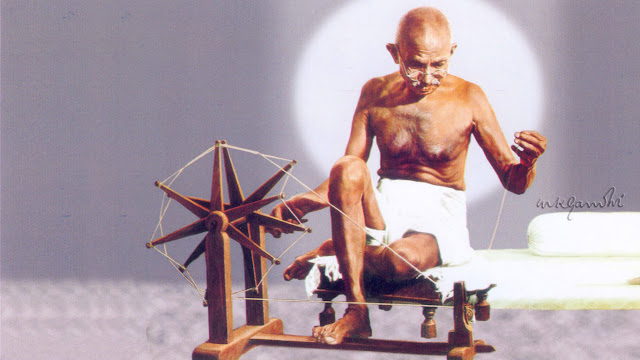Gandhian philosophy: The sphere of influence in Higher Education.
Gandhi
was a hero and a great ambassador of the modern higher education. In his
article titled ‘National Education’ published in Young India on September 1, 1921, he wrote that it might be true regarding other countries but in India where 80% of
the population is occupied with agriculture and 10% of it with industries, it
is an offence to make education merely literary. The great idea of the line is
that education is much more than to gain literacy knowledge.
Gandhi
always talked about India as an agrarian country. Most of the Indian industries
are based on agriculture. Therefore, Gandhi wanted more and more self-financed
agriculture colleges should be opened and they should be attached to related
industries. Gandhi thus stressed the self-reliance of the country and advocated
self-sufficiency of the colleges and universities. Mahatma Gandhi was never in
favour of government aid to boost education. He, however, wanted the
university's control over the colleges and that of the government over the
universities.
Gandhi
knew that rural India is very much prone to various natural disasters like
floods, landslides, droughts, and cyclones and therefore he wanted the active
participation of young men and women in the work of local rural community
issues to build disaster resilience. To ignite the young people, he even edited
himself a weekly journal in English, published from 1919 to 1931. In 1933
Gandhi started publishing a weekly newspaper, Harijan in English. Gandhi also
published Harijan Bandhu in Gujarati and Harijan Sevak in Hindi. All three
papers focused on Indian and global issues. These are in the course curriculum
of various social and economic academic syllabi at the national and
international levels.
The
freedom struggle under the leadership of Mahatma Gandhi revolved around the use
of khadi fabrics and the dumping of foreign-made clothes. Mahatma Gandhi began
promoting the spinning of khadi for rural self-employment and self-reliance in
the 1920s in India, thus making khadi an integral part and an icon of the
Swadeshi Movement. Actually, that was the first start-up program in India. On
November 3,1930, he delivered a speech before the start of the famous Dandi March,
in which he emphasized the exclusively nonviolent struggle to empower a
self-sufficient India.
The
major change in the panchayat system of India came in the form of the passage
of the Panchayati Raj Act (73rd Amendment) in 1992. Domain features of this act
are a) a 3-tier system of Panchayati Raj for all States having a population of
over 20 lakhs; b) Holding panchayat elections regularly every 5 years; c)
Reservation of seats for scheduled casts, scheduled Tribes, and women (not less
than one-third of seats); d) Appointment of State Finance Commission to make
recommendations as regards to the financial powers of the Panchayats.
No
university in the country has established a Mahatma Gandhi chair despite the
nod from the University Grants Commission (UGC), according to the HRD Ministry
Officials. To enrich the academic resources of the university system, the UGC
has formulated a scheme for the establishment of chairs in universities in the
name of noble laureates, illustrious persons, and persons of eminence in areas
of their outstanding contribution. However, as per the official statistics of
the UCG, there are 419 students enrolled in the UG program in Gandhian studies
for 2017-2018 while the number of students enrolled in PG, M Phil, and PhD was
796, 51, and 78 respectively.
A
total of 17 PhD degrees were awarded during the session. The number of students
who enrolled in the programs during 2016-2017 was UG (321), PG (746), M Phil
(67) and Ph.D. (113). The number of PhD degrees awarded during the session was
38.
Under the present circumstances, we have not been able to incorporate his views in our system of higher education to the extent it ought to have been. However, the Department of Higher Education under the Union Ministry of Human Resource Development, has established an institution in his name which has set the curriculum for community engagement.




Comments
Post a Comment